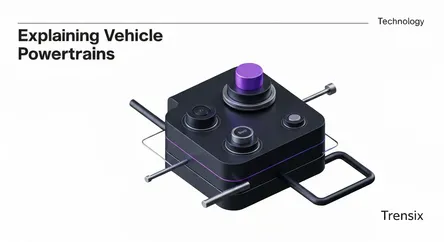Technology
Explaining Vehicle Powertrains

Discover what a powertrain is, the key components that deliver power from the engine to the wheels, and how it defines a vehicle's performance.
What is it?
A vehicle's powertrain is the complete group of components that generates power and delivers it to the road. It's the heart and muscle of any car. In a traditional internal combustion engine (ICE) vehicle, this includes the engine, transmission, driveshaft, axles, and the differential. The powertrain's main job is to convert the engine's force into the motion that propels the vehicle. It encompasses the entire system, including the power source (engine or electric motor), distinguishing it from the drivetrain, which typically excludes the engine.
Why is it trending?
The term "powertrain" is trending due to the automotive industry's shift towards electrification. Electric vehicle (EV) powertrains are fundamentally different. They consist of a battery, an inverter, and one or more electric motors. This simpler, more efficient design offers instant torque for rapid acceleration and requires less maintenance than traditional engines. As automakers invest billions in developing new EV and hybrid technologies, discussions around powertrain efficiency, range, and performance have become central to the future of transportation and global sustainability goals.
How does it affect people?
The powertrain directly impacts a driver's experience and wallet. It determines a vehicle's acceleration, fuel economy (or battery range), and overall performance. For consumers, choosing between a gasoline, hybrid, or fully electric powertrain is a significant decision when buying a new car. This choice influences everything from daily running costs and maintenance schedules to the vehicle's environmental footprint. Understanding powertrain differences is crucial for making informed purchasing decisions that align with personal needs, budget, and values in today's evolving auto market.